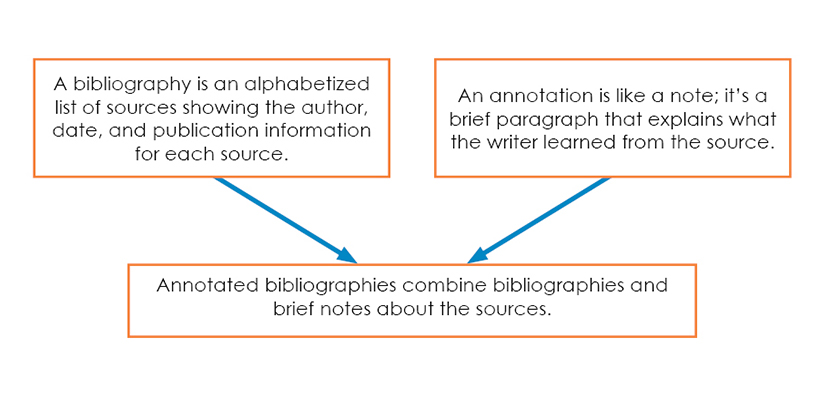

Source: Excelsior Online Writing Lab
An annotated bibliography entry consists of two components: the Citation and the Annotation.
Citations should be formatted in the bibliographic style that your professor has requested for the assignment. In the case of this course, it will be MLA 9th edition.
Annotations are a description of the source being cited written by you, and typically include three things:
Although there is a basic structure to annotated bibliographies, your professor may require something a little different. Be sure to follow your assignment instructions when composing your annotation.
Be sure to use MLA style to create the bibliography entry that starts off each annotated source on your list. Zotero is a free and easy to use program to help you format a bibliography within a few clicks! Watch the video (6 minutes, 16 seconds) to learn more.
You need a relatively narrow focus (a relatively narrow research question or a working thesis sentence with a clear angle) in order to gain value from doing an annotated bibliography.
As you research, select the sources that seem most related to your narrow focus. Skim the sources first; then more carefully read those that seem useful to your research focus.
In your annotation for each entry in your annotated bibliography, summarize the source. Reproduce the author’s main ideas in your own words. Be careful to change the wording and the structure as you put the information from the source into your own words.
After you summarize, analyze the source. Ask yourself questions such as the following: Is there enough relevant information to address my narrow focus? Does the author delve deeply into the subject as opposed to offering a general overview? What type of evidence does the author use? Does the author use statistical information accurately, to the best of my knowledge?
Finally, evaluate the source’s usefulness to the narrow focus of your research. Make connections between the source and your focus for your project.
“Tips on Writing an Annotated Bibliography.” Excelsior College OWL, https://owl.excelsior.edu/research/annotated-bibliographies/annotated-bibliography-tips/. Accessed 1 June 2022.